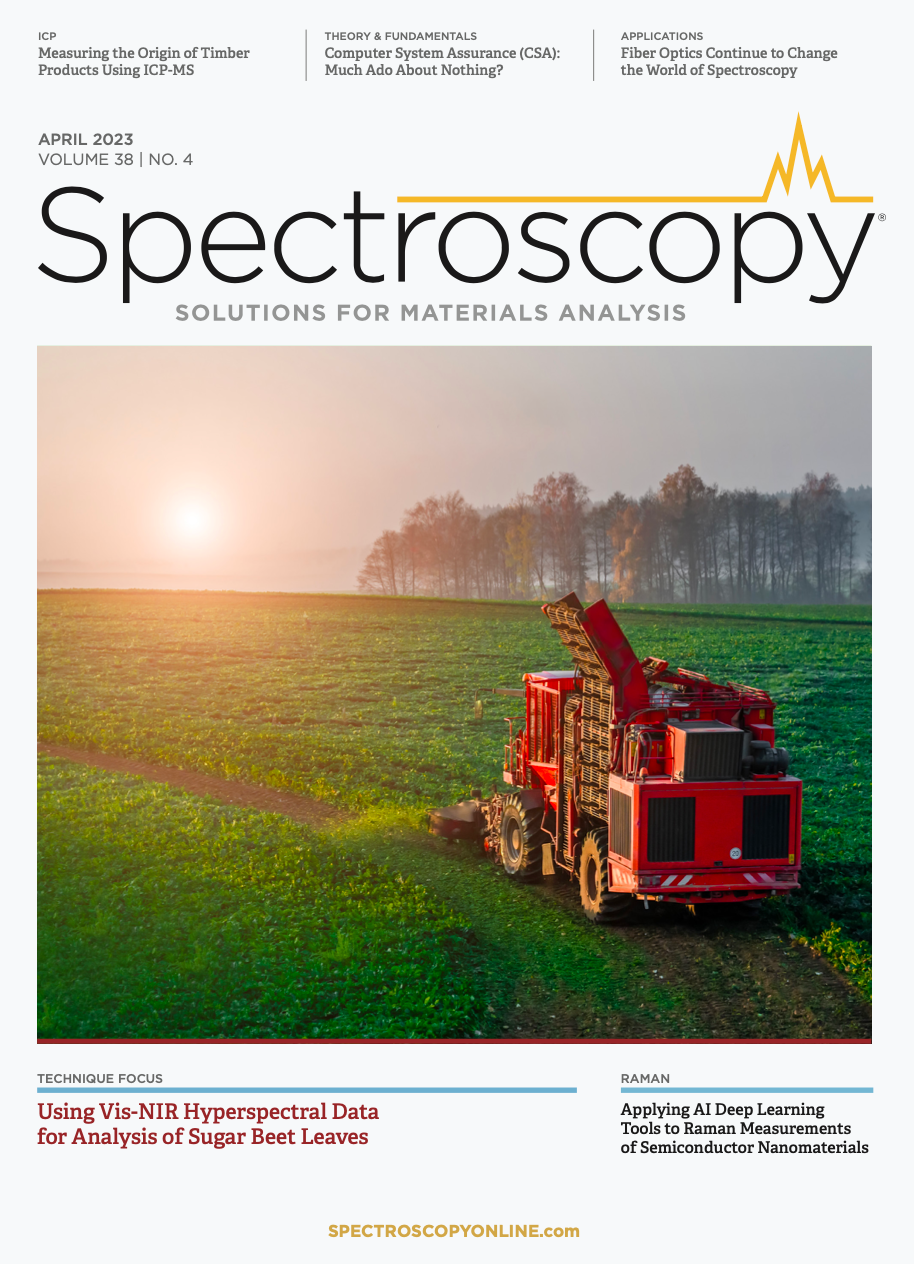Clay and Soil Organic Matter Drive Wood Multi-Elemental Composition of a Tropical Tree Species: Implications for Timber Tracing
Although tracing product origin by the analysis of their multi-element composition has been successfully applied in several commodities, the potential for doing the same with timber has not yet been determined. Laura Boeschoten and her team studied the reactive soil element pools and the multi-elemental composition in sapwood and heartwood for 37 Azobé (Lophira alata) trees at two forest sites in Cameroon, measuring 46 elements using inductively coupled plasma mass spectrometry (ICP-MS), and conducted the first study relating wood multi-elemental composition of forest trees to soil chemical and physical properties in an effort to combat the illegal trade of timber. Laura spoke to Spectroscopy about this study and the technique’s potential.
Your paper (1) deals with using forensic methods, specifically ICP-MS, to independently trace timber origin in order to combat the illegal timber trade. Briefly state why you chose this technique over others.
ICP-MS has shown a lot of potential for origin identification of commodities—for example, for wine and cabbage. One of the pros of the method is that you can measure a large number of elements simultaneously, thus providing a lot of information easily. That is why we thought it would be interesting to try this for timber as well.
How can multi-elemental composition provide a chemical fingerprint for timber tracing?
Trees have a different multi-elemental composition in different regions. We are looking for the differences between locations, to find something like the fingerprint or barcode of a specific site. Based on that, you can compare the chemical composition wood of unknown origin to a reference dataset. This tells you which location your sample is most similar to, which may help trace location when the origin is unknown or when it needs to be verified.
Please describe details on how you applied random forest analysis for determination of timber origin.
We used a classification model to test whether we could correctly assign our trees to their respective origin. We chose a random forest model for this, as it is a robust machine learning method that compares many different decision trees and then gives you the best classification model for your dataset. The random forest model can thus predict the most likely origin of wood based on the chemical composition.
Please describe your discovery and development process, and how this differed from what was previously done by yourself or others.
We were the first to show the potential of multivariate analysis for tracing timber origin. The idea was developed some years ago when our team was researching other methods for the same purpose, and they saw that the method was applied in other commodities. We then tested for variation in timber, and tried to understand what drives differences in wood chemistry between different origins based on soil composition to be able to apply the method in timber.
Please summarize your findings.
We found that wood of two locations could be allocated to the correct origin with great success, and we found that wood chemistry was associated mostly with soil clay content and soil organic matter.
What are the implications of your research, and how do you see them combatting the illegal timber trade, both short term and long term?
We hope to test this method on a larger scale and in other species, to further understand how it works, and where it has the most potential. Then it will be a great addition to the timber tracing toolbox; together with other methods, we will be able to independently verify timber origin. This is an essential step in combatting illegal timber trade, as, currently, the origin is only verified by documents and external tags, both of which are prone to falsification.
Were there any particular challenges you encountered in your work?
Most of the challenges for this project were related to fieldwork. Of course, we needed a lot of wood and soil to test this method, so we had all the challenges related to setting up a field campaign. You need all the right people and material in the right place at the right time, which was challenging sometimes. And then Covid started, so we outsourced most of our fieldwork to local partners. This strengthened our collaborations, but also made it harder to understand what was going on in the field.
What sort of feedback did you receive regarding this work?
We received a lot of positive feedback on our project: forestry companies, competent authorities, non-profit organizations, and the Dutch customs laboratory were even involved from the start, and are very enthusiastic about the progress.
What are the next steps in this research?
As explained earlier, the next step will be to test this method on a larger scale with more species. This will improve our understanding of the full potential of the method.
Reference
(1) Boeschoten, L. E.; Sass-Klaassen, U.; Vlam, M.; Comans, R. N. J.; Koopmans, G. F.; Rocha Venâncio Meyer-Sand, B. et al. Clay and Soil Organic Matter Drive Wood Multi-Elemental Composition of a Tropical Tree Species: Implications for Timber Tracing. Sci. Total Environ. 2022, 849, 157877. DOI: 10.1016/j.scitotenv.2022.157877
Laura Boeschoten received her BSc and MSc at Utrecht University (the Netherlands), and is currently a PhD Candidate at Wageningen University (the Netherlands), in the Timtrace project, led by Prof Pieter Zuidema. She investigates chemical methods for timber tracing. Direct correspondence to: laura.boeschoten@wur.nl

